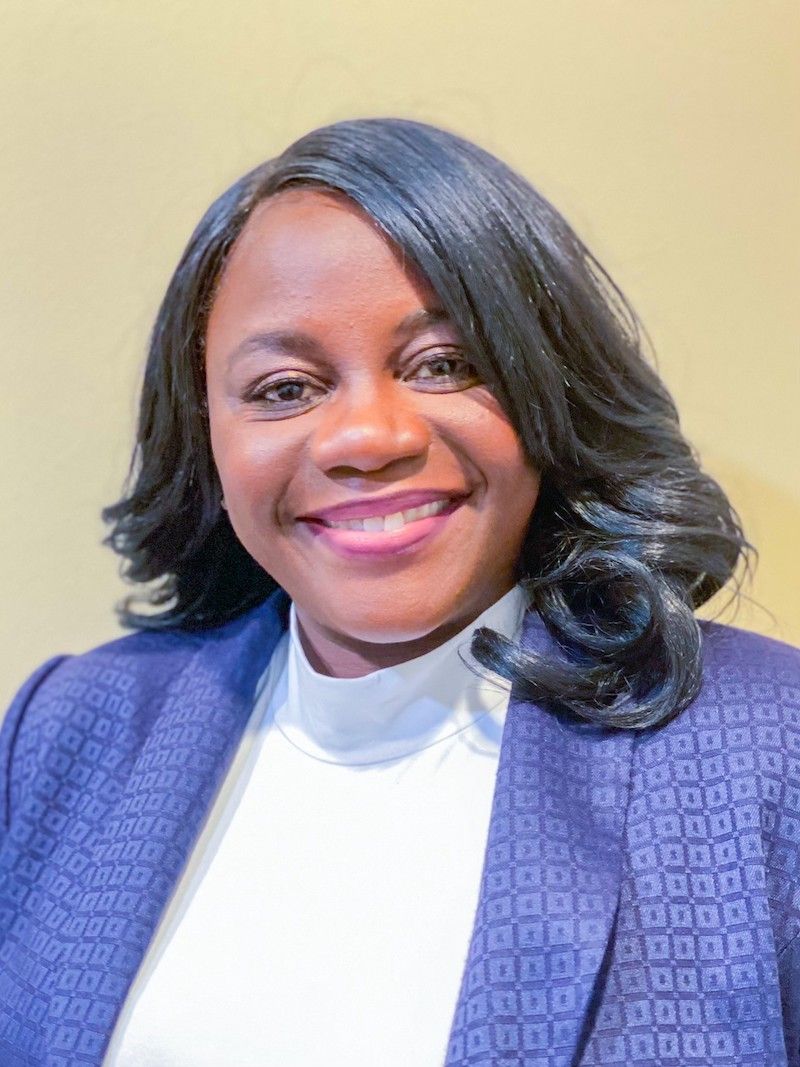- Center on Health Equity & Access
- Clinical
- Health Care Cost
- Health Care Delivery
- Insurance
- Policy
- Technology
- Value-Based Care
Contributor: Solving the US Physician Diversity Problem
The representation of Black physicians is alarmingly low, but the opportunities for change are possible and urgent. Health care leaders and human resource departments need to address these disparities, and increasing diversity among their workforce is an excellent place to begin.
A 2021 UCLA study published in Journal of General Internal Medicine recently declared that the percentage of Black physicians in the United States has remained essentially unchanged for the past 120 years.
Only 5% of US doctors identify as Black.
Recent polling from the Gallup Center on Black Voices highlights the future implications of this paltry level of representation in arguably one of the essential professions in society.
Our research found that adults from racial and ethnic minority groups are far more likely to report that they struggle to find a doctor who shares their racial or ethnic background in the area where they live: 53% of Black Americans and 39% of Hispanic Americans say it is very or somewhat difficult to do so compared with just 13% of White Americans.
Gallup's data show that those who say it is difficult to find a doctor who shares their background give lower ratings of their health care experiences and are more likely to report experiencing discriminatory actions during a health care encounter. That pattern undermines trust in the health care system among people from racial and ethnic minority groups, which leads to less utilization of preventive health care and, ultimately, worse health outcomes.
Indeed, Black Americans also experience some of the worst health outcomes of any racial group, as evidenced by Black men having the shortest life expectancies and Black women having the highest maternal mortality rates.
Health care leaders and human resource departments need to address these disparities. Increasing diversity among their workforce is an excellent place to begin. A diverse staff benefits employees and organizations, and diversity, especially among physicians, holds profound implications for patient experiences and outcomes.
Build the Pipeline
Diversity usually requires building a strong pipeline, but the number of active residents in medical colleges in 2020 who were Black was a mere 5.5%, according to the Association of American Medical Colleges. Moreover, an August 2020 study published in JAMA Network Open found that none of the 30 new medical schools and colleges established since 2000 are at historically Black colleges or universities (HBCUs).
Changing these trends demands an overhaul of medical practice and medical academics. It also requires a radical shift in prevailing mental models—that physicians are mainly White doctors in white coats.
Vibhas Ratanjee is a senior practice expert with Gallup, based in Gallup's Irvine, California office.

Developing a more robust pipeline of Black physicians starts with unlocking opportunities, breaking biases, and reframing mental models. This reframing needs to start early—even in middle school—through education, role modelling, outreach, and a learning environment that empowers Black students, particularly in STEM (science, technology, engineering, and math) disciplines.
Black Americans are underrepresented in those fields. So much must be done to promote these as possible educational pathways for Black children. A learning environment and a support system that is open, inclusive, and transparent reinforces the belief that anything is possible.
Organizational leaders might well point to a lack of diverse candidates as a problem for medical schools to solve instead. But health care leaders have influence, such as representation on committees and in forums where critical decisions are made, that can affect the pipeline of Black physicians and health care leaders. They can also support future Black physicians by promoting and increasing their visibility while actively mentoring and coaching Black residents in their organizations.
Make Key Experiences Count
It is a known fact that positive and negative experiences shape leadership character. Perhaps few know this more than Black men and women. Many can attest that grit and adversity have shaped their very lives, purpose, and perspectives.
Further, most Black physicians have experienced being tokens or one of few of their racial and ethnic backgrounds in the medical schools they attended. Many have suffered microaggressions, inequity, open hostility, and negativity. These inequities continue in the workplace.
During the COVID-19 crisis, many have lost their lives—at least 107 Black health care workers, according to a Scientific American estimate. A November 2020 Kaiser Family Foundation study reports that over half of the health care workers who contracted SARS-CoV-2 were people of color.
But adversity is also a great teacher. As Martin Luther King Jr. famously said, "The ultimate measure of a man is not where he stands in moments of comfort and convenience, but where he stands at times of challenge and controversy."
Camille Lloyd is the executive director of the Gallup Center on Black Voices.

Black students, physicians, and health care workers must intentionally identify such breakthrough moments to help them grow. These essential experiences are events in a leader's life that result in learning and increased capacity to lead effectively.
A Gallup piece in collaboration with the Allegheny Health Network identified 6 discrete experiences—all of which are relevant to developing future Black physicians and health care leaders—that can help physicians grow their leadership impact:
- Early participation and involvement in committees can give Black residents a voice and increase their visibility and exposure. This is critical, as organizations would greatly benefit from amplifying Black voices in future policy decisions, patient-centricity, and innovation efforts.
- Involvement in cross-functional projects and professional networking can give Black health care employees a larger view of the system—exposure they will not get inside an organizational silo. Forums and organizations such as Society of Black Academic Surgeons and Association of Black Women Physicians are important organizations that encourage networking and learning.
- Out-of-expertise skill-building or involvement in new initiatives can help Black health care employees gain additional skills, including administration, teaming, and leadership. Those skills are essential but may not be acquired during a residency.
- Great mentors can help push Black residents and Black health care employees out of their comfort zone. Cross-race mentoring can further help health care employees form diverse views and perspectives. Considering the lack of Black representation among senior physicians, White physicians must be more than allies—they must be coaches, mentors, sponsors, and advocates.
Reimagine the Black Employee Experience
The much-touted Great Resignation might not affect employees of different ethnicities equally. Many Black employees may stay in toxic environments for lack of better opportunities. Black health care employees may stay despite facing severe challenges precipitated by the pandemic. A Gallup-West Health survey in 2021 showed that Black workers were 50% more likely to stay in unwanted jobs than White workers, fearing they might lose their employer-sponsored health insurance.
Employee assistance programs; cultural competence; developing "safe spaces"; redrafting diversity, equity, and inclusion policies; or setting quotas for hires from traditionally underrepresented groups might help. But as long as an intentional focus on developing and engaging Black employees is not part of the Black employee experience, health care organizations will continue to see low representation and disengagement amongst racially diverse employees.
Ensuring that Black health care employees are engaged and thriving is key to retaining them. This requires a focus on what Black employees need through the entire employee experience—from attraction, hiring, and onboarding to development, performance management, and even exit management.
Health care organizations must confront racial bias in hiring physicians and other health care workers. The attraction strategy and employee value proposition should actively communicate what the employee experience promises to Black employees' growth and development, and importantly, organizations must live up to those promises. The hiring process must be reimagined to include a broader spectrum of residents from traditional medical colleges and HBCUs.
This could even mean that curriculum vitaes or talent reviews must be anonymized to eliminate chances of biases. Engagement efforts should ensure that Black employees can be themselves rather than conform to the cultural norms and expectations long embedded in the culture of health care.
A focus on development should also be inclusive, and the best way to do that is to ensure that organizations track key diversity metrics for diverse employees. Those typically include representation metrics, but engagement, health, and well-being metrics or meaningful development and promotion data are also vital key performance indicators. So is tracking the number of Black physicians promoted to key leadership positions or into future-critical specialty practice areas.
Equity in Physician Development
Research has consistently shown that people with diverse ethnic identities have unfavorable social determinants, such as education, housing, overall well-being, and human flourishing. Lack of physician diversity will lead to further health disparities, as there is a direct link between a lack of Black physicians and the health struggles of Black people in the United States.
But these disparities have grown from complex inequities over millennia. It is possible to break this cycle of systemic racism in health care. It would require a coordinated effort from academic institutions, medical colleges, health care providers, and the government.
The outcome is clear: More Black patients can find a Black physician if they choose to. And along with that doctor, a sense of comfort, a feeling of respect, fulfilment of their specific health care needs, and eventually their overall well-being. The representation of Black physicians is alarmingly low, but the opportunities for change are possible and urgent.
Dan Foy, health care portfolio leader at Gallup, and Jennifer Robison, senior editor at Gallup, contributed to this article.
